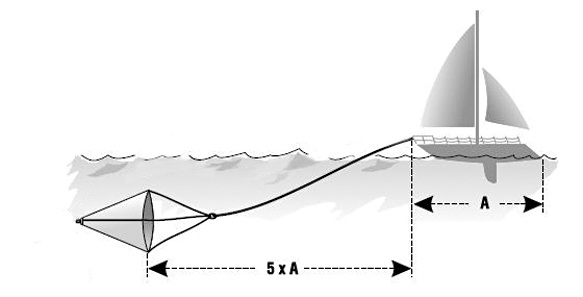In cases when our boat is still due to any kind of breakdown it turns with its starboard or port towards the weather and it is carried away faster from the sea since its biggest surface is exposed to the blowing wind and waves.
The only thing
The only thing that we have got in our hands to deal with this situation is the floating anchor with which we achieve two basic things:
• To hold the bow of the boat towards the weather, a fact which will deter the undesirable constant transverse inclination and the unobstructed entry of water on the deck when the waves break on the tubes, especially in bad weather.
• To prevent the boat from being carried away without any resistance by the waves. The floating anchor works as a “brake” and minimizes the movement of the boat keeping us close to our mark while in parallel it protects us from the extremely dangerous approach to the rocks when we are close to a shore.It’s function
It is clear therefore, that the first thing we should do when we sail adrift is to use the floating anchor. In order not to waste any time, which can sometimes be lifesaving, we should have a long and thick rope permanently adjusted to the floating anchor by being tied up to its conveyor belts. Therefore, it is immediately thrown to the sea and the free edge of the rope is tied at a bow bollard.
As soon as the rope is stretched, the floating anchor begins to function restricting the movement of the boat to the minimum. The cone shape of the floating anchor allows it to fill in quickly with water which, due to the gradual restriction of its incision, delays its flow in it. The «enclosed» bulk of water, finding a way out from the smallest opening of the floating anchor, keeps it permanently open and consequently in constant function. The bigger the floating anchor, the more the bulk of water enclosed in it having as a result a better holding of the boat.
In fishing
Apart from the above mentioned cases of sailing adrift, the floating anchor can constitute a useful tool for fishing. Our fishermen friends are aware that in some techniques, the most common one being bottom fishing for red snappers, it is sometimes preferable to fish when the boat is slowly carried away by the weather in order to fish in larger areas of the sea bed or to locate the places where fish are.


